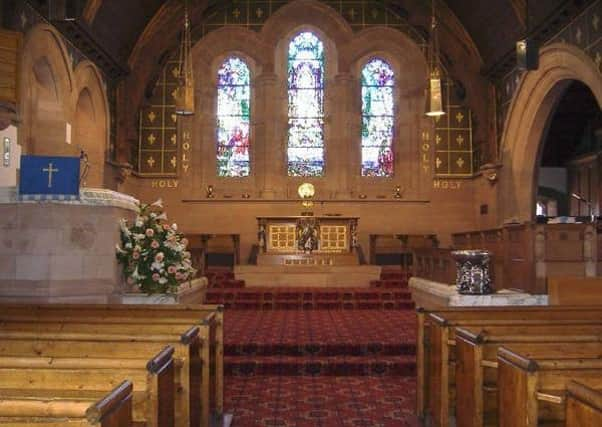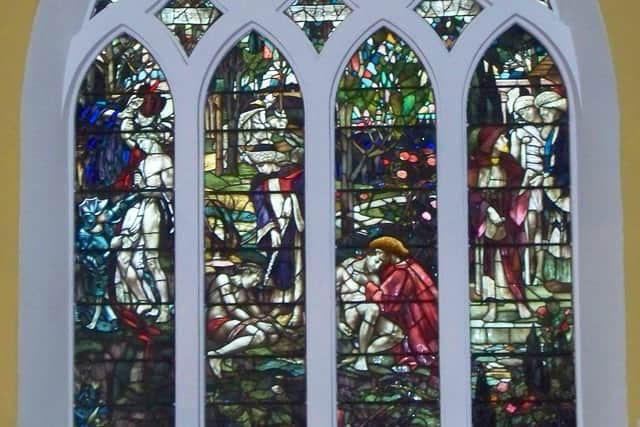Legacy of stained glass artists can be found in Falkirk district churches


The slow decline in church attendance in this secular age has left Scotland with a host of lovely Victorian buildings that have lost their original purpose.
Many of them have already fallen to the bulldozers and we are much the poorer as result not least by the potential loss of magnificent stained glass.
Advertisement
Hide AdAdvertisement
Hide AdVictorian Scotland was an intensely religious place and Falkirk was as enthusiastic as the rest of the country.


Between 1875 and the end of the century more that 20 new churches were built in the district paid for by the iron masters and men of business who were stalwart supporters of the ‘‘kirk’’ in its various forms.
It was also a time when hostility to church decoration gave way to an appreciation of beautiful works of art and this brought a new flowering of the art of the stained glass designer.
Anyone who has had the pleasure of seeing Ros Mitchell’s excellent presentation on Falkirk’s church windows will know that some of the greatest artists working in the field have left their glorious mark in churches in every corner of our district.
Advertisement
Hide AdAdvertisement
Hide AdRos who was inspired by seeing each Sunday the work of Christopher Whall, the London designer and craftsman who was one of the country’s greatest and most innovative artists.
The two great windows in what was then Falkirk Parish Church were installed in 1897 and show scenes from the Old and New Testaments including a masterly retelling of the parable of the Good Samaritan.
They were dedicated to the memory of the Melville family of sawmillers and, across the district similar dedications began filling the kirks with light and colour.
The new Whall windows replaced earlier ones by the Edinburgh firm of James Ballantine which were moved to the side windows.
Advertisement
Hide AdAdvertisement
Hide AdBallantines had been among the first companies to respond to the new age, specialising in images that recalled classical religious paintings with simple messages and lifelike figures.
Their work is to be found across the district most notably in Polmont Old where the two great windows on either side of the pulpit are as bright and clear today as when they were installed back in 1876.
The firm was also responsible for the Jacobite windows in the Howgate shopping centre which had originally been commissioned in the 1860s for South Bantaskine House.
In the early 20th century a new wave of Scottish designers transformed the inside of many of the new church buildings.
Advertisement
Hide AdAdvertisement
Hide AdStephen Adam and his great pupil Alf Webster working from their Glasgow studio set new artistic standards and Webster in particular was well on his way to the top of the profession when his life was cut short in World War I.
Examples of Adam’s work are to be found in the former Erskine church in Falkirk as well as in Airth Parish Church and most notably in Larbert Old where Alf Webster’s brilliance is there for all to see.
From the other side of the country came the most productive of all, Douglas Strachan from Aberdeen, whose designs are also in Larbert Old, Dundas in Grangemouth and most famously in Stenhouse and Carron Church.
Later it was William Wilson from Edinburgh with windows in Abbotsgrange and Dundas, Grangemouth and St Andrew’s, Falkirk.
The work continued into the modern era.
Advertisement
Hide AdAdvertisement
Hide AdWhen a new Catholic Church, St Francis Xavier’s in Hope Street, opened in 1961 it contained a good deal of innovative stained glass including the great front window with its triangular lancets designed in France.
Ros Mitchell is not alone in hoping to see all this artistic treasure protected and saved for posterity.
It is a fantastic part of our heritage.